|
There is nothing quite like a new school year. While it brings hope and new beginnings, it also brings chaos and exhaustion. This year the latter two seem to have headlined the beginning of this school year, and by this weekend, I was already sick for the second time this fall, this time putting me into bed for 2 full school days. While teachers are used to changes every year, it is always hard to get used to being thrown into the year with barely enough time to prepare. To add to the many challenges at my school this fall, we have a bubble of newcomers that have arrived - not a huge number, but enough to make us think about best ways to welcome and teach them.
Newcomers, or ELLs who arrive with very little English, come with special challenges. Some of these are SLIFE - Students with Limited or Interrupted Formal Education. They are 2 or more years behind their U.S. peers in literacy and numeracy. Some of them didn't attend school regularly in their countries for safety reasons, financial reasons, or other. Some of them did attend school, but what school looked like in their country was very different from U.S. schools. Sometimes, these students are not literate in their first language, making it harder to learn English because they can't transfer knowledge from what they know to their English learning. Some of them are literate in their first language, but need a lot of reinforcing of concepts, vocabulary, and writing. And some of them have had so little schooling in their countries that they need help with learning basic studentship skills, such as holding and sharpening a pencil, sustaining attention in class, organizing binders and folders, and other classroom systems. Yet others are struggling with adjusting to how radically different American systems are from their country's ways, such as unfamiliar ways to flush the toilet. Some of the newcomers we are welcoming in our school are not SLIFE. They have had adequate education in their countries of origin and they are on close to grade level. Their challenge is that they speak very little English. They have something of an academic background, so they will probably learn English quickly, being able to transfer their knowledge and apply it to English. Mainstream teachers are not the only ones who struggle with newcomers. They present a challenge even to ELL teachers. Sometimes people ask me if I speak all the languages my students speak. I wish! I would love to! It is definitely a struggle when there is such a range of English levels and languages in one class. In one social studies class this year I have students who speak Kinyarwanda, Spanish, Cape Verdean Creole, Portuguese, Chinese, and Vietnamese. They English levels range from low intermediate to true beginner, as in, can say "hello" and that's about it. My biggest challenge is how to teach them content when they are just getting used to school here, barely know their way around the building, have trauma in their backgrounds, and don't yet have friends here because of the lack of a common language. I don't have the magic solution of how to teach them well, either. So, in the third week of school, as I was feeling very overwhelmed, I remembered to go back to the basics: building community. I brought hot chocolate packets to class, ripped swaths of paper off of the huge roll in the staff copy room, took all my markers and crayons out, and typed up some instructions for class. They were to make banners representing their countries, with flags, "hello" in their language, and the names of others in the class from that country. Because it was social studies, they also wrote the continent their country is on. The activity seems basic, definitely below their academic level - but the outcome of the activity was not the point. The point was for the class to have some down time at a very stressful time for most of them (as new arrivals) where they could chat with each other in their beginning English while enjoying some hot chocolate (a first for some of them). I would like to believe it helped to bring them together as well as allow them to see they were in the same boat, or recently had been. As I put the banners up, I hope they will be a reminder of our little ELL community, hopefully a safe, comfortable space for them in which they will be able to learn and grow. And, they will remind me of the joys of teaching them when they smile, laugh, show off talents such as dancing, and say their first words in English.
1 Comment
 Summer....a time of rest and relaxation for teachers, of renewal and rejuvenation, self-care and catching up. All true - but few teachers I know actually take the whole summer off. I myself taught a graduate class, collaborated with colleagues, went to several meetings before our official back to school date, planned, and set up my classroom on my own time. Other teachers I know taught summer school, went to professional development institutes on their own dime, met and collaborated with other teachers, read books about teaching and education, and more. It is true that our schedules, for a brief time, are more flexible; we can use the bathroom calmly; we can eat meals at more regular times; we can sleep in. We also use this time to take care of many repairs, personal care, and medical appointments we can't get to during the school year: haircuts, dentist, all kinds of doctors, car repairs, house repairs and improvements, and so on. We treasure our summers, and we need them. We need the physical break from teaching, and we very much need the mental breaks. We take our students home with us in our brains, constantly worrying about them and thinking up ways to reach them and strategies for helping them at school and home. By the last day of school in June, I am depleted. As we begin this new school year, if you are not a teacher, keep us in mind. I know that many people have difficult and stressful jobs, and I don't mean to play the victim. But each year, teaching gets more and more challenging. Among the stressors we face are the ever-growing fears of armed attacks on schools; students' increasing anxiety and declining social-emotional state; human resources practices that cause alarm among teachers; families that are ready to blame teachers rather than forge relationships with them and work together towards the children's education.Sometimes, the public forgets that teachers are on the front lines, so to speak. If you have children in school, please find ways to support their teachers. There are many things you can do without having to spend a lot of time. Here are some:
Teachers, I hope that you embark on this school year with renewed hope for our students and our schools, and with memories of a summer that fulfilled you in some way. As I start my 25th year of teaching, and 5th year of blogging, I still get nervous, and I still have hope. Here we go again! As this school year comes to an end, I'm having all kinds of feelings. This happens every year in June, but this year it's especially magnified because my son graduated from high school.
I know it won't be his final graduation,and he's not leaving home yet - he's taking a gap year to stay home, work, and take a few classes - but it is still a big deal. I remember my own high school graduation, and how I cried inconsolably, thinking about how things would never be the same again. I knew it would be a departure from my home town and my classmates, and I was both scared and looking forward to that change. Graduation has made me very reflective about my son's school pre-k to 12 education, and thinking about how I am so very thankful for so many wonderful teachers. My son started preschool not knowing any English (we spoke only Spanish at home) and still in diapers. He was so nervous and anxious about being there that my husband had to attend preschool with him for a few days until he would be allowed to leave. Thanks to his amazing preschool teachers, Dolly, Krista, and Gabe, his adjustment was short. Soon he was learning English as well as some Korean words from his new Korean preschool friends, who were also learning some Spanish from him. I would drop him off every day, and he would run towards the large wooden blocks and start building airplanes, boats or cars. When that graduation happened, I cried like a baby. Kindergarten was a new and wonderful experience, with so much creative learning happening thanks to Ms.Wilcox and Ms. Mastroianni. And there was room for creativity, which was a beautiful thing - not the kindergarten experience many kids have today. His teachers cultivated his literacy and he published his first book, an important part of the elementary curriculum at this school. While my son had many great teachers, two especially stand out from his elementary experience after K. In second grade we were lucky that he had Ms.Mattone, who allowed my son to sit at a desk when everyone was sitting in circle on the floor, to do pull-ups in the hallway, and to become her tech assistant in class. She didn't love him at first, she told me, but she always found something to love about each student she had - and eventually she found that about him as well. In 5th and 6th grade, Mr,Prather let my son explore on Khan Academy, seeing his potential as a bright young boy who needed something different. In my mind, he understood my son and didn't try to make him a different person, and because of Mr.Prather, my son finished elementary school prepared for the next step. I was worried about what my son's middle school years would be like for him, especially because I was teaching there. But again, he had teachers who managed to bring out the best in him. There are too many more to name from 7-12 - I wish I could thank them all individually for helping him along in their way. They each contributed something to my son's education, whether it was pushing him to do better, allowing him the space he needed, or seeing the potential in him. At a retirement party I went to last week, several people commented on how much the retiring teachers cared about her students, and I thought about how much all the teachers I know and work with ALL care so much about the students. Teachers are pretty amazing people, with the capacity to care for kids every year, over and over, despite so many challenges and issues. Every year we wipe the slate clean and start over again. We have eternal hope for our students - we must, in order to do our jobs well. We cry when our students leave and rejoice when we heard good news about them. Years later, we wonder about students who have moved on. After an emotional night at graduation, I feel so grateful to all of my son's teachers. And I am grateful to teachers everywhere, for all the love, care, concern, tough love, pushing, guiding, correcting, crying, and laughing they all did and do. So thankful for all of you. Enjoy your summer, enjoy your time off, your families and the things you like to do, and wipe the slate clean for a fresh start in the fall. 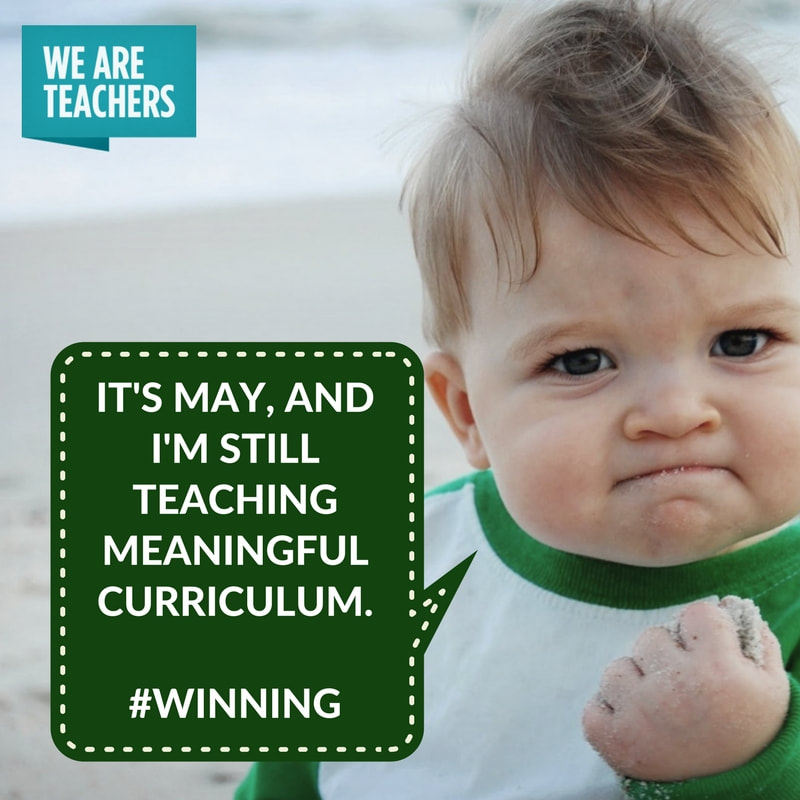 I can't believe that there are only 14 days to go. So close, yet so far! May has been a nonstop whirl of events and driving kids places, hence the lack of posts. In honor of Mother's Day and Teacher's Appreciation Week, I'm posting an article that was recently published in our local newspaper, the Hampshire Gazette, about the experience of writing with my mother. Almost five years ago, I started blogging as a way to commemorate my twentieth year of teaching.My blog was a way to reflect on my practice. I wrote about the mundane, the funny, the serious, and the frustrating aspects of teaching and education. Though when I graduated from college, I was sure that I didn’t want anything to do with teaching, twenty years later I found the outlet of blogging helped motivate me in the classroom. Then, one day, I was offered the chance of a lifetime when my mother, a lifelong educator, asked me if I wanted to write a book with her. I was elated and nervous; my mother is my biggest fan but also had already published numerous books about education and has had an illustrious career in academia. This was an opportunity I could not pass up. The result was our book, Teaching, A Life's Work: A Mother–Daughter Dialogue. It was a daunting task at first. Fortunately, my mother had been through this process many times and guided me in her confident but gentle manner. She taught me how to lay out the table of contents and work from there. I taught her how to use Google documents, an invaluable tool for this sort of collaboration. Also, years of writing for an audience, through working with the Western Massachusetts Writing Project and blogging, helped me feel comfortable with the thought of writing for a larger audience. We wrote from our own perspectives as teachers/teacher educators, checking in with each other as we wrote. When we began the process almost two years ago, my mother was still busy speaking at conferences and universities, editing her own series of books, writing forewords for other academics’ publications, and more. I was embarking on a two-year stint as a halftime administrator and halftime ELL teacher, and was raising (still am raising), along with my husband, three teenagers. We knew that in order to get chunks of writing done, we had to get away. However, we couldn’t be gone for long periods of time, and we couldn’t go too far away. We took a series of mini writing retreats, starting in August of 2017 in Brattleboro, Vermont. We fell into a routine: we worked steadily starting early in the morning (though not too early!), stopped for lunch and an afternoon nap, then continued writing until it was time for a pre-dinner drink and an enjoyable dinner. In this manner, we worked our way through the book’s chapters in Brattleboro, Hartford, New York City, and the Berkshires. When we were home, we also took long mornings to work at local cafes, or to work at my mother’s dining room table. One morning, we sat in her dining room to complete our “talking chapter” (a format popularized in a terrific book by Ira Shor and Paulo Freire in 1987), where we posed questions about education to each other over a cup of café con leche, and we recorded our answers, to be transcribed later. Our book was released in late January of this year. When I received my copy, I was a little numb from disbelief. As someone who loves to write, it was a dream of mine to publish a book one day. I never thought it would be a nonfiction book about education and teaching; I always saw myself as a writer of fiction. It was, nonetheless, a thrilling moment for me. People love to ask me, “What was it like to write with your mom? Did you fight?” I inevitably respond, at the risk of disappointing people, “No - not at all.” It’s true. We discussed, reflected, questioned, advised, recommended, and edited each other, but we never argued. We’re lucky to already have a strong, perhaps unique mother-daughter relationship, and writing a book together only strengthened it. Recently, I was at a conference with my mother, and I attended a session at which she presented along with other “elders” in the academic community, and their views on the future of education. After listening to the speakers in this presentation, I felt humbled. In public education, old ideas are constantly being brought back and touted as new, or completely new ideas and policies are thought up, ostensibly by people who sit in cubicles, and not teachers who are actually in classrooms. Instead, perhaps we should take the time to really listen to our elders, and draw from their collective knowledge and experiences. Writing this book with my mother allowed me to do just that. I learned from her and with her, and in the process, spent much valued time with her - something I will never regret. Middle school: a cruel, amazing, funny, weird, horrifying and scary time of life for so many kids. For middle school teachers, many of those adjectives apply as well. As I sit listening to one of my 8th grade students explaining A Midsummer Night’s Dream to another student, all in her heavy NY accent and using teen-friendly language, I am amused and amazed. I get confused every time students read the play, yet I am confident that if I listened to this student, I would get it.
Last week my students asked me why I chose to teach this age. I responded honestly. I have taught all ages from 9/10 and up, and this is the age I chose because I love it. They didn’t seem to really believe me. However, I insisted that I decided years ago that I identify as a middle school teacher. My mother and I were just talking about this, and about how more and more, there is a middle school teacher identity that is different from a teacher biding his/her time until they can teach high school. Here are just a few of the reasons I love teaching this quirky, strange, fun and funny group of kids. Middle school students are brutally honest. One asked me today, “Is that what your hair is like, Ms.Lopez, curly?” I said, “I guess, it’s wavy when I don’t blow dry it.” She responded, “I like it.” I trust that if she didn’t like it, she would have either told me, or remained quiet. I also trust that if my white hairs begin to show, or if I just got got a fresh dye job, they will also tell me. If my chin hairs are visible, or my concealer is not blended in, they will point it out. I trust this will happen because it always does. They will let you know, unlike some other ages who just want to impress and show love to their teachers. They have to keep it real by telling you the truth you didn’t want to hear. Middle school students are funny, and you can laugh out loud with them. The other day, I overheard a Latina student urging a classmate, also Latino, to forget about his recent breakup with a non-Latina. She exclaimed, “Ayyyyyyy! Come on, you’re Latino! You gotta go! Move on!” I pretended I didn't hear her and quietly laughed. I have a class during which, if I forget to hide my phone, I will pick it up later in the day only to find hundreds of selfies in a “burst” that 2 of my students, (always the same 2) took, of themselves making faces. One day I found a video of one of those 2 students mocking me, staring at the class over my reading glasses, scolding them and telling them to finish their work. When I mentioned it to them in the next class, they imitated me again, and I laughed out loud along with them. You can be silly with middle school students and they will still appreciate it. I told my student teacher, Ms.Stephani, a few days ago that she definitely has the personality for middle school. A singer, she will sing directions to students when they are not paying attention until they finally listen: “Roberto, close your computer, close your computer, close your computerrrrrrr” in a catchy tune. They might laugh awkwardly and think she’s weird, but they listen. It still works to threaten parent contact. In middle school, families are learning to let go a little, and give their kids some independence over their school work/school life. However, that is not to say that if you contact them, they won’t follow up. I find that in 9 out of 10 cases, my students are still somewhat anxious to totally terrified that I will contact home with bad news. Using the app Remind has made family contact much easier for me, and the students know that I will send a Remind message on the spot if needed. One day a few weeks ago, I sent a parent a message about a student cursing in class. I know it was just a slip on the student’s part, but on the 3rd slip, I let the dad know. Fortunately for me, and unfortunately for the student, this dad happens to work in our school. He showed up at my classroom door less than 2 minutes after I sent the message, finger crooked in a “come here now” gesture toward his kid. Middle school students are not too old to show they need you One student comes to mind right now. He is a gangly, fidgety, energetic student who is like a puppy in that his body is growing faster than he can keep up with it and his legs and arms seem to be all over the place. He will go up to male teachers and slap them on the back like they are old football buddies, and when he high fives you your hand will sting for a few seconds. He doesn’t quite know his strength yet. He complains pretty consistently about school, yet is almost never absent. This student shows up at my door maybe 3 or 4 times every day, whether he has class with me or not, to say hi to my student teacher and me. Sometimes it is between classes, and sometimes on his way back from the bathroom during a class. The consistent presence of some teachers, and some classrooms, are a grounding force for him, though he might not be able to articulate it. There are perfect matches for every grade and every teacher personality. I feel lucky to have found mine. Dear Adriene of Yoga with Adriene,
My student teacher and I are huge fans of your YouTube channel, Yoga with Adriene. We love your no-nonsense style and how you can laugh at yourself. We also appreciate all the different routines you have, such as: yoga for the neck, yoga for migraines, yoga for couch potatoes, and yoga for loneliness. Today, we decided to show our class of 7 middle school boys (who are learning English as a second language) one of your seated yoga videos to warm up at the beginning of class. We assumed that, like for us, a bit of yoga would help them get some energy out and relieve stress, while getting them ready for learning. After that experience, we believe this is a whole niche your YouTube channel may be missing. We have talked about it and we would like to suggest a new routine for your channel: Yoga for Middle School Boys. This routine should probably include the following poses:
We believe that Yoga for Middle School Boys would be appropriate for ages 12-14, especially. We have 7 middle school consultants who are very vocal and would be happy to help you plan this routine. We are certain that they would even be willing to be filmed doing this routine, dramatically recreating cat cow noises, screaming "ay fo!", and farting on demand. Please let us know what you think of our proposal. In the meantime, we will keep following you and trying out new videos while observing our students add their own individual middle school twists to each pose while we stand there, looking at them in disbelief. Thank you. Sincerely, A middle school teacher who has seen it all, and her student teacher who is learning fast to not be surprised by anything. I am a published author. What?? I can hardly believe it. A lifelong dream of mine, realized. I didn't think my first book would be about teaching and education, nor did I think it would be nonfiction. When I was younger, I imagined myself an author of Nancy Drew type books. As I got older, I fancied myself a writer of memoirs, and maybe a book of poetry.
No matter - it happened in the best way. I am eternally grateful to my mom, Sonia Nieto, for believing in me and for taking me on this path. She guided me as we constructed our book together, figured out what our focus would be, and wrote together. Without being heavy-handed, she led me through the process of becoming an author. Our book is a labor of love. The time we spent together on weekend retreats and long mornings at our favorite cafes is time I will treasure long beyond the publication of our book. I know that not everyone loves to spend so much time with their mother, and that many who would like to spend that time, cannot. I have many friends whose mothers passed away too young, and I know how fortunate I am to have mine by my side (literally - we are neighbors). The time we spent writing involved a lot of work and some pleasure as well. On our retreats, we always took naps, and always broke in the early evening for cocktails and a delicious dinner. Our mornings spent at cafes included tasty breakfasts or lunches. Our book is also an ode to teaching and teachers. From one of the biggest fans of teachers I know, and from a teacher who has been in the classroom almost 25 years, we reflect on our beginnings as teachers, and explore topics such as writing, cultural responsiveness, ELL, public education, the importance of mentors, and curriculum. Many of my contributions to the book were originally published in this blog and revised for publication. We both hope that our book will provide teachers and others some insights, and that it will be a statement in support of public education and hardworking teachers all over the country. If you would like a copy, you can order it here: www.tcpress.com/teaching-9780807761090 Would you rather get a root canal or go back to school to teach a full day after Christmas break?
Would you rather hear the dentist drilling to your core or the whining of your students when they realize they have to do school work again? Would you rather smell the onion-y odor of middle school youth in the halls, or the medicinal minty scents of the dentist's tools? These were actual questions I asked myself on New Year's Eve Day as I sat in the dentist's chair hearing his diagnosis: I needed a root canal. The big question was: would you rather teach all day with tooth pain that makes you want to cry or scream, or get the root canal ASAP? I opted for the root canal. In a strange way, I was relieved. I had none of the usual anxiety about going back to school after the break. I was almost happy to be facing the dentist first thing in the morning rather than my students. It made me think. What was happening that I would feel relief to get a root canal on January 2? I realized that even though we had just had a good 10 days of vacation, it wasn't quite enough. In my case, I had appointments, errands, food shopping, and cleaning to do - so much so that I rarely had down time. Though I don't like the terms "me time" and "self-care", I understand that teachers really need both. And over my break, I didn't reserve enough time for either. Our job is hard. Maybe, like a fellow teacher with whom I was talking the other day, one of the hardest. We do our job without enough time to collaborate and prepare. We deal with the neediest people, sometimes at their most vulnerable, day in and day out without enough training to do so. Social problems and mental health issues are growing, and work-creep continues. Budget cuts leave us without arts, languages, dance, counselors. It is all overwhelming and exhausting. That is why today, while having my root canal and listening to a podcast, I actually felt relaxed. It shouldn't have to take a 2 hour dental procedure for this to happen, though. I guess this is all to say this: teachers, take care of yourselves. We often put everyone before us, our families and our students. While it's hard to not do this, at the same time we need to be more deliberate about doing things that relax us or make us happy. Today at the gym, I was doing laps in the pool when in the lane next to me I recognized a long time guidance counselor from my school (now retired), mentor, community pillar, and family friend. When I asked him how he was, he said "Hanging in there. If I can do one thing a day that makes me happy, it's all good." Words to take to heart. As teachers know, the weeks between Thanksgiving and Christmas break are a test of our patience and sanity. It can be a challenging time for adults and students alike for so many different factors. Here in C-21, I am just trying to keep my curriculum going forward and the students in a semi-working and learning state. Not an easy task on December 17th!
In social studies, my beginner students are (fairly) engaged with a task-based project on an African country. This was part of our continent study of Africa, which I recently rolled out. On the first day, my students watched a slideshow of beautiful, colorful, amazing photos of glittering cities, modern skylines, clean streets, and smiling and healthy looking people studying, shopping, working, and going to school. The students had to decide which continent each photo showed. At the end of the slide show, surprise! They found out that all of these amazing photos take place on the continent of Africa. One student, who is from Korea, knew that they were all in Africa. When I asked her how she knew, she said that her father traveled all over Africa for his work, and she had seen many photos of his travels. Another disbelieving student shouted, “Miss, that can’t be Africa! Everyone knows they are all poor and it’s only desert there!!” Whooooaaaaaa. I knew I couldn’t get angry at this student, because this was his perception and probably what he had been taught by media images for years. I had a huge job ahead of me, teaching about 50+ diverse countries in the 2nd largest continent, and I had more undoing of stereotypes than I thought. The other comment that alarmed me, made by another student, was, “Why should I want to study Africa, anyway? I’m never going to go there!”. Now, this student’s own country was a colony to which hundreds of thousands of slaves were taken, and which has an ethnic blend of African, Taino, and European ancestry. I challenged both of these students on their notions of what Africa is like, telling them how diverse it is, and how indeed, there are huge modern cities, and much more than deserts, animals, and jungles and, I told them, who knows if you will go there or not one day! The next task in the roll out of my curriculum for this unit was, freestyle and without looking at any maps or globes, to draw the continent of Africa. The results were amusing, and even the students laughed when they compared their drawings with reality. They wanted to vote on who did the best, and unsurprisingly the student with the closest rendition of Africa was from Cape Verde. A few weeks later, after studying many different political, physical and other maps of Africa, we repeated this exercise, and the results were much better. My students were coming along. We then looked at a map of Africa, published by Boston University. In it are all the places that could fit inside Africa: the whole continent of Europe, and the countries of China and the United States (including Alaska). The students were wide-eyed. I hoped that they would begin to understand the immensity of the continent. This week, the students began their quest to find out more about a country in Africa. They were each tasked with convincing my student teacher that she should travel to the country they are reporting on, and just to make the stakes a little higher, she will actually choose one of them. Because I know that my students will have to find the information on their own in order to really believe it (middle school students have a healthy amount of skepticism, even about what their teachers tell them!), they will each delve into finding out what makes their country interesting and special. At the end of this unit, I’ll have the students reflect on what they learned. We will watch the slideshow once again, and perhaps instead of shocked faces that the photos were all of Africa, they will shout out, “That photo is in Lagos!” and “That one is Nairobi!” In any case, in 4 days, we will have a much-needed retreat from our beloved students and schools. Hang in there, teachers! We got this! As teachers, we often underestimate how students will react to the things we say or do. I have been surprised many times over the years when former students make comments such as, "I remember you always said -----", or "I will never forget that time you told me ----". And sometimes, the students we think we might not be reaching at all are the ones who remember us the most.
I have a class that is small, but quite loud. One of the students, who punctuates everything she says with a little scream, and is not ever afraid to express her opinion, regularly calls me her second mom. I can count on a daily hug from her as she passes my door. We played Kahoot in class the other day, and this student didn't have her Chromebook (we are a 1:1 Chromebook school). Not wanting her to miss out, I lent her my phone on which to play the game. At the end of class, as she handed her phone back to me, she showed me with delight all the pictures she had secretly taken of me, in addition to several selfies of herself. At least it was on my own phone, not hers, so I know she couldn't actually post them anywhere. I don't have to guess with this student - I know we have a connection, and it helps to keep her engaged in class. In a not-so-clear cut example,a few years ago I had a class made up of half very vocal and half very shy students. One of the quieter, shy ones always started every assignment 20 minutes later than everyone else. He always appeared to be in his own world, and I didn't think he was listening when I spoke. I wanted to light a fire under him to show what I knew he knew. In fact, all of his teachers were worried about his lack of engagement and low work output. At the beginning of the school year, I had tried something new; I showed a slideshow explaining the class guidelines, and I added a slide that said "I believe in you: you are a good person, you are appreciated, you are part of this community". I told each class that as corny as it sounded, it was true. They half-smiled at me, not really seeming to believe it. The quiet and shy student who was disengaged had an emotional crisis that year. Shockingly, he named me as an adult in the building he would feel comfortable speaking to. I don't know if my corny "I believe in you" slide had anything at all to do with this, but something had made him feel at ease in my class. We never really know what our students are taking in and how our words or actions influence them. We can only hope that we are that "go to" adult for some students, or that classroom where they feel like they can let out their breath and be themselves. In my school district, teachers work hard at making those connections with kids, and I would wager that most kids feel "seen". In fact, one teacher who had my son and daughter in two different classes expressly makes it one of her goals to make sure her students are "seen". I had a few teachers who "saw" me - whether they knew it at the time or not, I don't know. I see them once in a while for coffee, and I tell them, lest they didn't know a the time, what a huge influence they had on me when I was a high school student. Sometimes the connections teachers and students make are obvious. At other times, we have to have faith that, where the connection is not so clear, the impact we have will still be long lasting. We all have that power as teachers. |
|
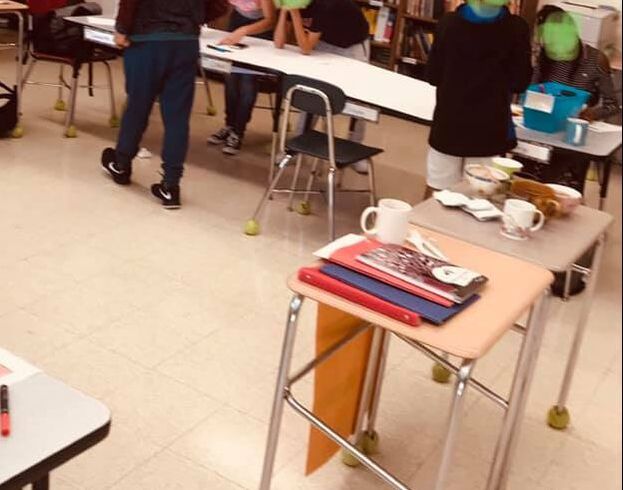
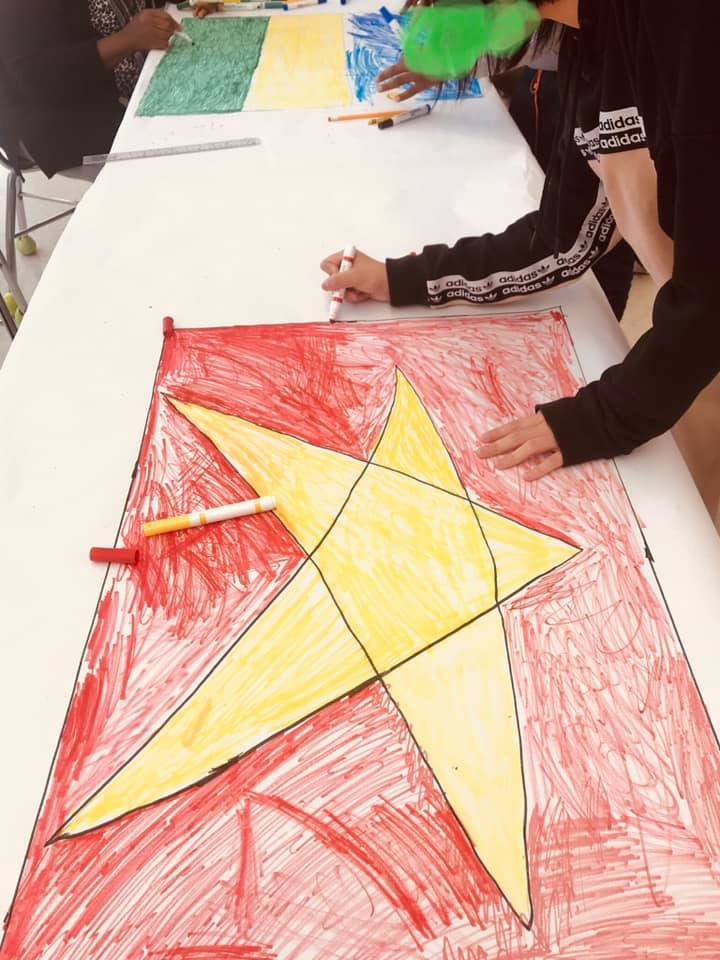
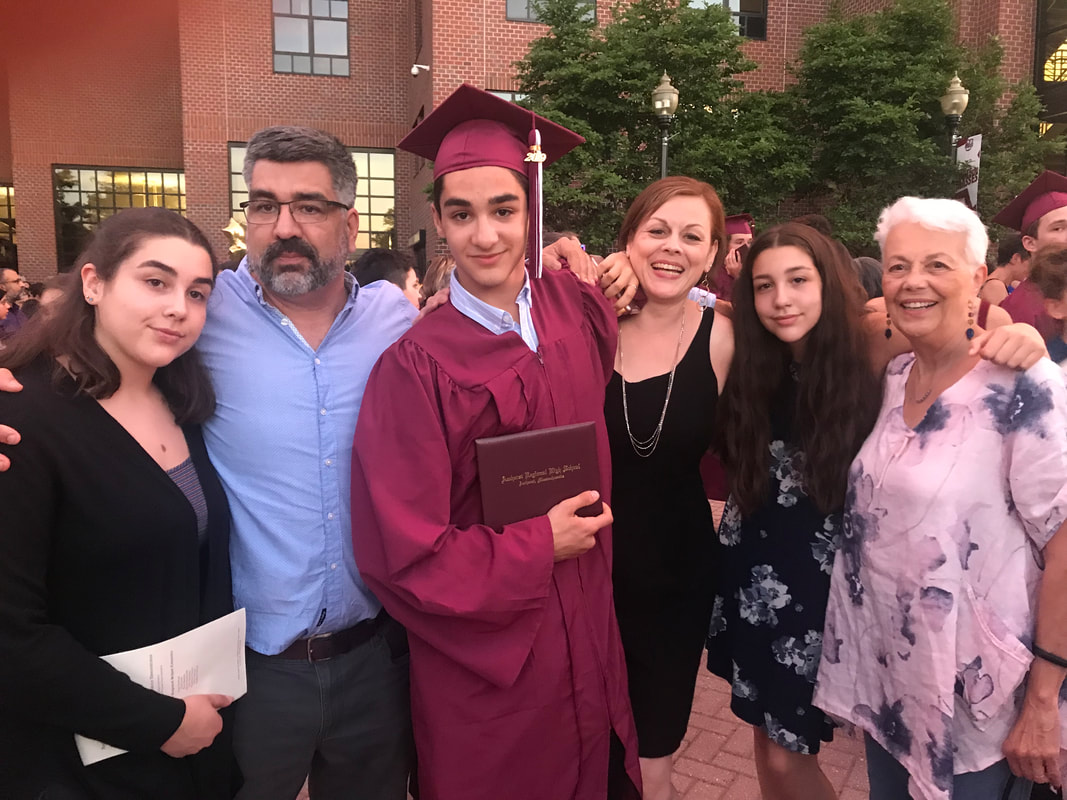

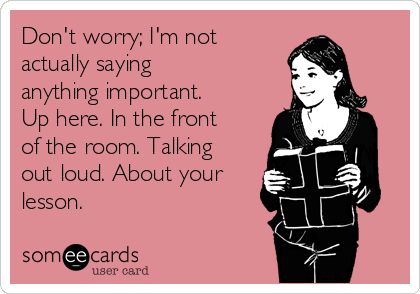
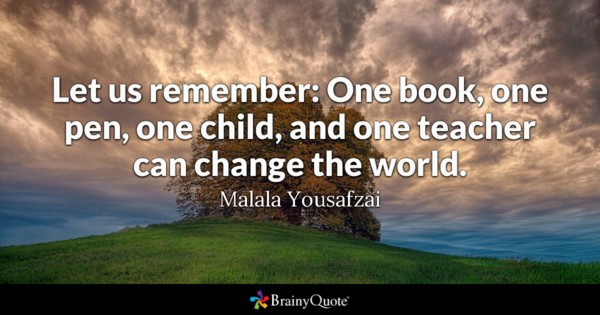
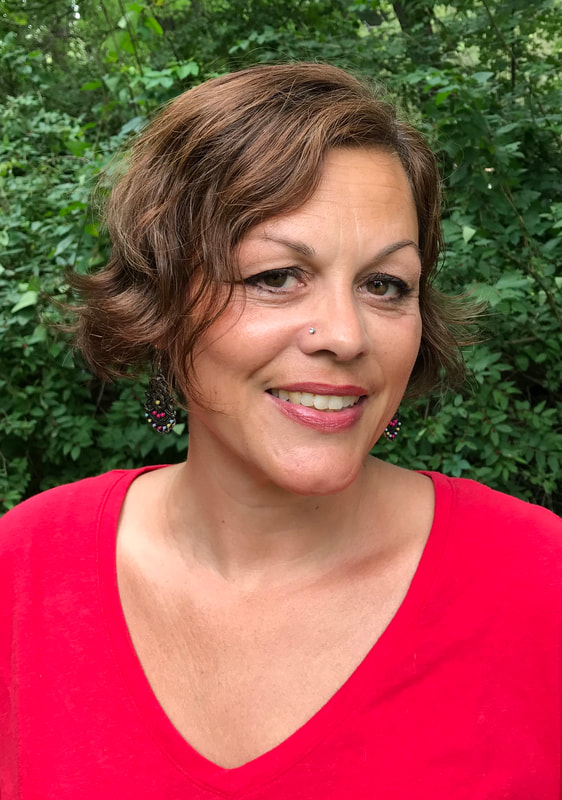
 RSS Feed
RSS Feed
